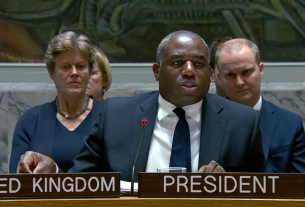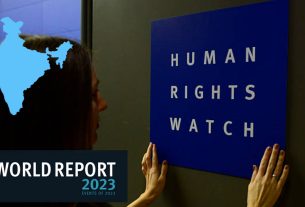The issue of migration has become one of the most divisive and polarizing topics in European politics, particularly in recent years, as the continent grapples with rising numbers of refugees and migrants seeking to cross its borders. While much of the discourse around migration often frames migrants as a burden or threat to national security, economy, and social cohesion, a closer look at Europe’s demographic crisis reveals a striking paradox: many European countries are facing serious labor shortages, an aging population, and vacant towns, all of which could potentially be addressed by migrant labor.
Europe’s Demographic Crisis: A Growing Need for Workers
Europe’s population is rapidly aging. According to a 2023 report from Eurostat, more than a quarter of Europeans will be aged 65 or older by 2050. At the same time, many European countries, especially in Southern and Eastern Europe, are experiencing population decline due to low birth rates and high emigration. Italy, Spain, Greece, and Portugal have seen significant depopulation in rural areas, with some towns and villages literally becoming “ghost towns” as younger generations leave in search of better opportunities.
The declining workforce has profound implications for Europe’s economy, as the labor supply shrinks while the demand for workers continues to grow. Key industries such as agriculture, construction, healthcare, and hospitality are struggling to fill vacancies, which is a major issue for many European economies. In 2023, the European Commission reported that labor shortages were one of the primary concerns for European businesses, with many industries facing recruitment challenges.
Additionally, there are thousands of vacant buildings and derelict properties across Europe, particularly in rural regions, due to population decline. These towns, often in need of regeneration, could benefit from the influx of migrants who could help revitalize communities by filling these labor gaps and contributing to urban regeneration efforts.
Migrants: An Economic Opportunity?
Despite the evident economic benefits that migrants can bring, many European countries have struggled to devise a coherent and sustainable strategy to integrate migrants into their economies. Migrants often work in sectors that are vital to the economy but are avoided by local populations, such as seasonal agriculture, construction, domestic care work, and manual labor. For instance, in Germany, France, and Spain, migrants make up a large proportion of the workforce in industries facing persistent labor shortages, but this contribution is often not fully recognized in political discourse.
Moreover, several European cities have already benefitted from migrant labor in the regeneration of abandoned areas. For example, Palermo, Italy, has seen positive results from migrant-led initiatives to restore historical buildings, while rural parts of Spain have relied on migrants to keep agriculture going despite an aging rural population. In fact, studies by the OECD and Eurostat have shown that migration has contributed to GDP growth, helped maintain welfare systems, and filled labor shortages, which are all critical issues in many European countries.
A report by the European Parliament in 2022 argued that migration is essential for the sustainability of Europe’s welfare states, as migrants contribute not only to the economy through their labor but also to the tax system, which helps fund pensions, healthcare, and education.
The Political and Public Perception Problem
Despite the clear economic benefits, migration is often framed in Europe through a political lens of fear, security concerns, and social anxiety. Right-wing populist movements, such as Italy’s Lega, France’s National Rally, and Hungary’s Fidesz, have capitalized on public fears of migration, framing migrants as a threat to national identity, security, and social cohesion. These parties often argue that large-scale migration leads to cultural dilution, crime, and uncontrolled population growth.
Such political rhetoric has shaped public opinion, with migrants being seen not as a solution but as a problem. Surveys conducted by the European Union Agency for Fundamental Rights (FRA) in 2023 found that anti-migrant sentiment is on the rise in several EU countries, partly due to concerns about competition for jobs, housing shortages, and the perceived strain on public services.
The portrayal of migrants as a threat is often driven by misinformation and exaggerated concerns about the economic impact of migration, which are not supported by the evidence. For instance, while some fear that migrants will take jobs from locals, research consistently shows that migrants complement rather than replace local workers, especially in low-skilled, labor-intensive sectors.
Legal, Structural, and Institutional Barriers to Integration
One of the main reasons why Europe has struggled to fully capitalize on the economic opportunities provided by migration is the lack of comprehensive and coordinated policies that effectively integrate migrants into society and the labor market. There are several barriers to this integration:
- Legal and Bureaucratic Barriers: In many European countries, the process of obtaining legal status or work permits is complex, slow, and expensive. Asylum seekers, for example, often face long waiting periods before being granted the right to work, leaving them in a state of uncertainty and economic inactivity for extended periods.
- Language and Skills Gaps: Migrants often face language barriers that limit their ability to access education or employment opportunities. Many migrants also come from non-EU countries, where their educational qualifications or work experience may not be recognized by European employers. This makes it difficult for them to enter the formal labor market.
- Social and Cultural Barriers: Discrimination, prejudice, and fear of the “other” can also create significant barriers to the social integration of migrants. These cultural divides often prevent migrants from becoming fully integrated members of society and contribute to tensions between migrants and native populations.
- Lack of Infrastructure and Support: Even in countries that want to welcome migrants, there often aren’t enough social services, housing, or community support systems in place to facilitate their integration into society. Without sufficient government investment in these areas, migrants may struggle to access the resources they need to become economically active and socially integrated.
The Way Forward: Creating a Sustainable Migration Strategy
To fully utilize the benefits that migrants can bring to the economy, European governments need to adopt more inclusive and strategic migration policies. This should include:
- Coordinated EU-wide strategies that encourage labor mobility, enhance asylum procedures, and promote the economic integration of migrants across member states.
- Pathways to employment for migrants through skills recognition programs, language courses, and job training tailored to the needs of local labor markets.
- Financial incentives for migrants to settle in underpopulated regions, revitalizing vacant towns and derelict buildings, while providing local businesses with the workers they need.
- Investing in social cohesion by addressing discrimination, ensuring equal opportunities for all workers, and promoting cultural exchange programs that foster understanding between migrants and local communities.
By reframing the conversation around migration—not as a threat, but as an opportunity to address labor shortages and demographic challenges—Europe could build a more inclusive, prosperous, and sustainable future for all its citizens. Migrants can help drive the economic growth and revitalization needed to address Europe’s shrinking population, but they need the right support to succeed.
References:
- Eurostat, 2023. “The Aging Population and Labor Force in Europe.” Eurostat
- OECD, 2023. “The Economic Impact of Migration in Europe.” OECD
- European Parliament, 2022. “Migration and the EU Economy: Challenges and Opportunities.” European Parliament Report
- FRA, 2023. “Public Perceptions of Migration in Europe.” FRA



